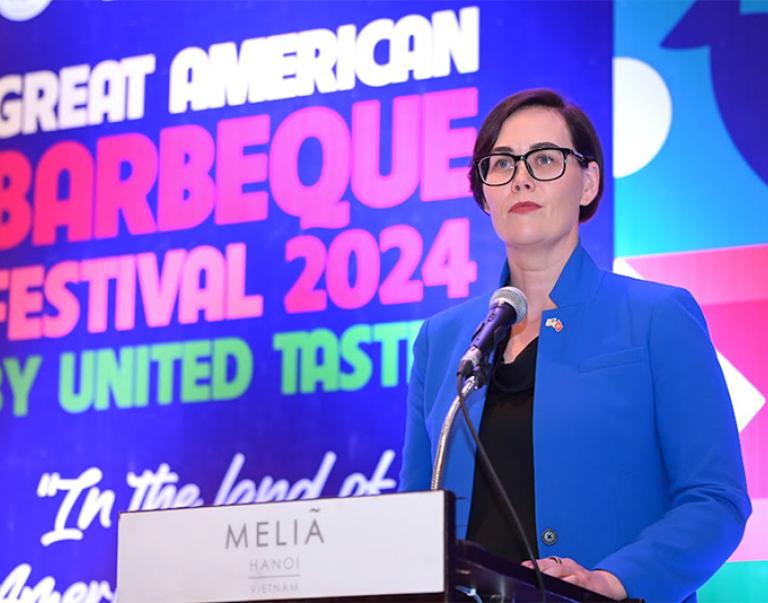WASHINGTON, Dec. 16, 2015 – In support of the Obama Administration's Climate Action Plan, the U.S. Department of Energy (DOE), the U.S. Environmental Protection Agency (EPA), and U.S. Department of Agriculture (USDA) jointly released the Biogas Opportunities Roadmap Progress Report today, updating the federal government's progress to reduce methane emissions through biogas systems since the Biogas Opportunities Roadmap was completed by the three agencies in July 2014. Today's report highlights actions taken, outlines challenges and opportunities, and identifies next steps to the growth of a robust biogas industry.
Biogas is part of the White House's strategy to reduce emissions of methane, a potent greenhouse gas with more than 25 times the global warming potential of carbon dioxide and valuable source of energy. In the Climate Action Plan, President Obama directed the Administration to develop a comprehensive, interagency strategy to reduce methane emissions. In March 2014, the White House released the Climate Action Plan - Strategy to Reduce Methane Emissions. As part of the strategy, DOE, EPA, and USDA committed to work with industry leaders to formulate a biogas roadmap in order to encourage cost-effective strategies for voluntary reductions.
The 2014 roadmap identified more than 2,000 sites across the United States that produce biogas, as well as the potential for an additional 11,000 biogas systems. If this potential is reached by 2030, biogas systems could produce enough energy to power more than 3 million American homes while reducing the methane emissions by an amount equivalent to 54 million metric tons of carbon dioxide, the equivalent of the greenhouse gasses from to 11 million passenger vehicles. Biogas offers American farmers, municipalities, and other stakeholders a way to reduce their waste outputs while adding another revenue stream by recovering resources with biogas systems for energy, nutrients, and other beneficial uses.
Since July 2014, DOE, EPA, and USDA have made progress toward realizing these benefits. They have revised their programs and policies to further support the growth of the biogas industry, such as improving the application process for various biogas funding and financing programs and including biogas as a cellulosic advanced fuel under the Renewable Fuel Standard. The agencies have also made progress by revising existing technologies, and updating informational tools, databases, and models. The three agencies formed the Biogas Working Group to work closely with biogas stakeholders to streamline existing agency programs, strengthen markets for biogas systems, and improve interagency coordination and communication.
Biogas will continue to be a key part of the federal government's long-term climate, energy, and development strategy. The Biogas Opportunities Roadmap Progress Report identifies next steps for federal agencies moving forward, which include promoting biogas utilization through existing agency programs (including $10 million in research funding), fostering investment in biogas systems, strengthening markets for biogas systems and system products, and improving communication and coordination across federal agencies and the biogas industry.
Progress report in brief: http://www.rd.usda.gov/files/biogas-infographic_11.pdf
Full Report: http://www.rd.usda.gov/files/Biogas-Roadmap-Progress-Report-v12.pdf
#
USDA is an equal opportunity provider and employer. To file a complaint of discrimination, write: USDA, Office of the Assistant Secretary for Civil Rights, Office of Adjudication, 1400 Independence Ave., SW, Washington, DC 20250-9410 or call (866) 632-9992 (Toll-free Customer Service), (800) 877-8339 (Local or Federal relay), (866) 377-8642 (Relay voice users).



